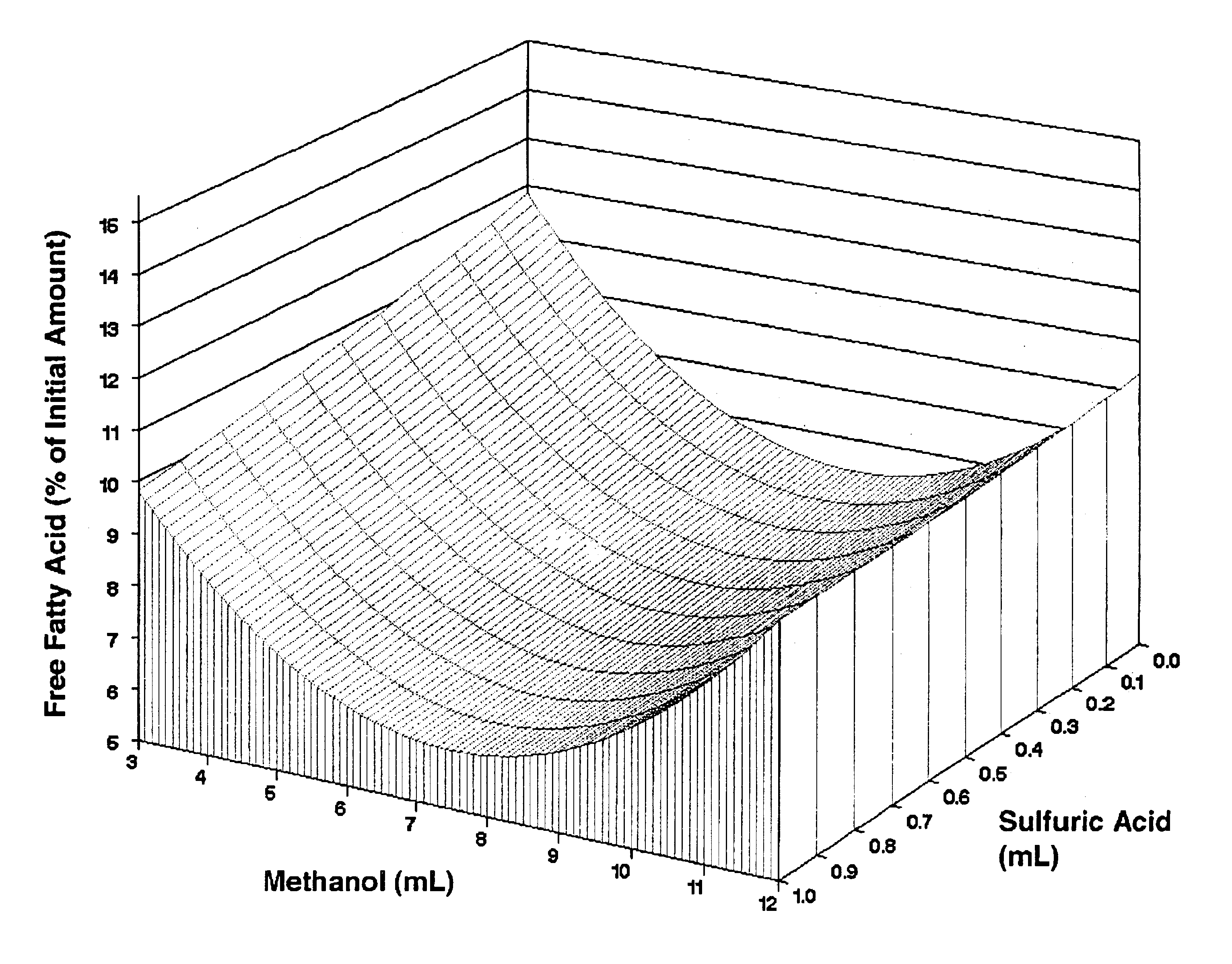Lipid rich compositions, production of lipid rich compositions, production of fatty acid alkyl esters from heterogeneous lipid mixtures
- Summary
- Abstract
- Description
- Claims
- Application Information
AI Technical Summary
Problems solved by technology
Method used
Image
Examples
examples
Experimental Procedures:
Chemicals: Triolein, 1,3-diolein, 1-monoolein, and free fatty acids for use as reference standards in HPLC were obtained from Sigma (St. Louis, Mo.). Palmitic, stearic, oleic, linoleic, and linolenic acids mixed in amounts proportional to their mass abundance in soybean oil (Fritz, E., and R. W. Johnson, Raw Materials for Fatty Acids, in Fatty Acids in Industry: Processes, Properties, Derivatives, Applications, edited by R. W. Johnson and E. Fritz, Marcel Dekker. New York (1989), pp. 1-20) served as the FFA standard. A mixture of FAME whose composition reflected the fatty acid content of soy oil (RM-1) was the product of Matreya, Inc., (Pleasant Gap, Pa.). Organic solvents were B&J Brand™ High Purity Grade (Burdick & Jackson, Inc., Muskegon, Miss.). Sulfuric acid (96.3%) was the product of Mallinckrodt Baker (Paris, Ky.). t-Butyl methyl ether (99+%, A. C. S. reagent grade) was from Aldrich (Milwaukee, Wis.). Calcium hydroxide (Ca(OH)2, Codex Hydrated Lime) wa...
PUM
 Login to View More
Login to View More Abstract
Description
Claims
Application Information
 Login to View More
Login to View More - R&D
- Intellectual Property
- Life Sciences
- Materials
- Tech Scout
- Unparalleled Data Quality
- Higher Quality Content
- 60% Fewer Hallucinations
Browse by: Latest US Patents, China's latest patents, Technical Efficacy Thesaurus, Application Domain, Technology Topic, Popular Technical Reports.
© 2025 PatSnap. All rights reserved.Legal|Privacy policy|Modern Slavery Act Transparency Statement|Sitemap|About US| Contact US: help@patsnap.com



